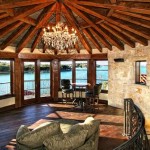Craftsman Style House Plans Under 2000 Square Feet In Oregon
The Craftsman style, a movement rooted in the late 19th and early 20th centuries, remains a popular choice for homeowners seeking a blend of simplicity, functionality, and natural beauty. In Oregon, where the landscape ranges from coastal forests to high deserts, the Craftsman aesthetic resonates particularly well, harmonizing with the state's appreciation for handcrafted quality and connection to the outdoors. This article explores the appeal of Craftsman style house plans under 2000 square feet in Oregon, detailing the characteristics that define the style, the advantages of choosing a smaller footprint, and considerations specific to Oregon's climate and building codes.
The Craftsman style emerged as a reaction against the ornate and mass-produced designs of the Victorian era. It emphasized honesty in construction, showcasing the natural materials used and celebrating the skill of the craftsman. This translates into designs that feature exposed rafters, prominent porches, natural wood finishes, and details that highlight the building's structural integrity. Smaller Craftsman homes retain these hallmarks, allowing homeowners to enjoy the style's defining characteristics without the maintenance and expense of a larger residence.
Oregon's architectural landscape benefits from the Craftsman style's adaptability. Whether nestled in the bustling city of Portland or gracing the scenic countryside near Bend, a Craftsman home can be tailored to its surroundings. The use of locally sourced materials, such as cedar and Douglas fir, further enhances the connection between the home and its environment. Furthermore, the style's emphasis on natural light and ventilation aligns with Oregon's climate, optimizing comfort and energy efficiency.
Key Characteristics of Craftsman Style Houses
Several key features define the Craftsman style, contributing to its distinctive aesthetic. These characteristics are often incorporated, with modifications for modern living, into smaller Craftsman homes.
Low-Pitched Roofs and Wide Eaves: The hallmark of a Craftsman home is its low-pitched roof, often with gabled or hipped designs. Wide, overhanging eaves provide protection from the elements and create a sense of shelter. These eaves often feature exposed rafter tails, adding a decorative element that showcases the construction. In Oregon, where rain and snow are common, these features are particularly functional, helping to protect the home's exterior from moisture and reducing the risk of water damage.
Prominent Porches: A welcoming porch is another defining feature of the Craftsman style. These porches are often supported by tapered columns or square pillars, and may extend across the entire front of the house or wrap around the sides. Porches serve as an extension of the living space, providing a place to relax, entertain guests, and enjoy the outdoors. In Oregon, where outdoor living is highly valued, a well-designed porch can significantly enhance the home's livability.
Natural Materials and Finishes: Craftsman homes emphasize the use of natural materials, such as wood, stone, and brick. Wood is often used extensively for siding, trim, and interior finishes. Natural finishes, such as stains and oils, are preferred over paints to highlight the grain and texture of the wood. Stone or brick may be used for foundations, chimneys, or accent walls, adding a sense of permanence and solidity. The selection of locally sourced materials reinforces the connection to the environment and supports local economies.
Interior Details: The interior of a Craftsman home typically features an open floor plan, with living spaces flowing seamlessly into one another. Built-in cabinetry, such as bookcases, window seats, and dining room buffets, are common features, maximizing storage space and adding character to the home. Fireplaces, often constructed of brick or stone, serve as a focal point in the living room. Wood trim is used extensively throughout the interior, framing windows, doors, and doorways. These details create a warm and inviting atmosphere that is both comfortable and functional.
Emphasis on Natural Light: Large windows, often grouped together or featuring divided panes, are used to maximize natural light. Skylights and clerestory windows may also be incorporated to bring light into the interior of the home. The emphasis on natural light creates a bright and airy atmosphere, reducing the need for artificial lighting and promoting energy efficiency. In Oregon, where overcast days are common, maximizing natural light is particularly important.
Advantages of Smaller Craftsman Home Plans
Choosing a Craftsman style house plan under 2000 square feet offers several advantages, particularly in the context of Oregon's housing market and environmental consciousness.
Affordability: Smaller homes are generally more affordable to build and maintain. The reduced square footage translates to lower construction costs, as well as lower costs for heating, cooling, and property taxes. This makes Craftsman style homeownership more accessible to a wider range of buyers, particularly first-time homeowners or those looking to downsize.
Energy Efficiency: Smaller homes require less energy to heat and cool, resulting in lower utility bills and a reduced carbon footprint. The Craftsman style's emphasis on natural light and ventilation further contributes to energy efficiency, minimizing the need for artificial lighting and air conditioning. In Oregon, where energy efficiency is a priority, a smaller Craftsman home can be a sustainable and environmentally friendly choice.
Reduced Maintenance: Smaller homes require less maintenance than larger homes. There is less exterior surface area to paint or repair, and less interior space to clean and maintain. This can free up time and resources for other activities, allowing homeowners to enjoy their lives without the burden of constant upkeep.
Cozy and Intimate Living: Smaller homes can create a sense of cozy and intimate living. The reduced square footage encourages a more minimalist lifestyle, focusing on quality over quantity. The open floor plans typical of Craftsman homes can further enhance the sense of connection and community within the family.
Environmental Considerations: Building a smaller home has a reduced environmental impact. The smaller footprint requires less land, reduces the demand for building materials, and minimizes waste during construction. This aligns with Oregon's commitment to environmental sustainability and responsible land use.
Oregon-Specific Considerations for Craftsman Homes
Building a Craftsman style house in Oregon requires careful consideration of the state's unique climate, building codes, and local regulations.
Climate Adaptation: Oregon's climate varies significantly from the coast to the mountains to the high desert. Coastal regions experience mild temperatures and high rainfall, while the mountains experience cold winters and heavy snowfall. The high desert is characterized by hot, dry summers and cold winters. Craftsman homes should be designed to withstand these diverse conditions. This may involve using durable materials that can withstand moisture in coastal areas, incorporating insulation and energy-efficient windows in colder regions, and providing shade and ventilation in hotter climates.
Building Codes and Regulations: Oregon has strict building codes and regulations that are designed to protect public health and safety. These codes cover a wide range of topics, including structural integrity, fire safety, energy efficiency, and accessibility. It is important to work with a qualified architect or builder who is familiar with Oregon's building codes and can ensure that the home is built to code.
Local Regulations: In addition to state building codes, individual cities and counties may have their own local regulations that govern land use, zoning, and design. These regulations may restrict the size, height, or style of homes that can be built in certain areas. It is important to research and understand the local regulations before starting the design process.
Material Sourcing: Oregon is rich in natural resources, including forests, stone quarries, and clay deposits. Sourcing materials locally can reduce transportation costs, support local economies, and minimize the environmental impact of construction. Using locally sourced materials also helps to connect the home to its environment, creating a sense of place and authenticity.
Permitting Process: Obtaining the necessary permits for building a new home can be a complex and time-consuming process. It is important to start the permitting process early and to work closely with local building officials to ensure that all requirements are met. A qualified architect or builder can assist with the permitting process.
Smaller Craftsman homes offer a blend of aesthetic appeal, functionality, and affordability. Their design principles, such as the use of natural materials, low-pitched roofs, and welcoming porches, contribute to a timeless elegance that resonates with many homeowners. By carefully considering Oregon's climate, building codes, and local regulations, it is possible to create a Craftsman style home that embodies the spirit of the Pacific Northwest while remaining practical and environmentally conscious.

Craftsman Style House Plan 4 Beds 2 5 Baths 2000 Sq Ft 56 689

Craftsman Style House Plan 3 Beds 2 5 Baths 2091 Sq Ft 120 162 Eplans Com

Sutton Vaulted Single Story Plan With Open Great Room 2000 Sq Ft

Craftsman Style House Plan 4 Beds 3 5 Baths 2638 Sq Ft 923 306

Craftsman Style House Plan 3 Beds 2 5 Baths 1891 Sq Ft 929 1179 Eplans Com
Pacific Northwest House Plans The Plan Collection

Craftsman Style House Plan 3 Beds 2 Baths 1657 Sq Ft 430 149

Ripley Stylish Single Story With Great Outdoor Space 2233 Sq Ft

Craftsman House Plans Modern Home Designs

Craftsman Style House Plan 3 Beds 2 5 Baths 1800 Sq Ft 430 79








